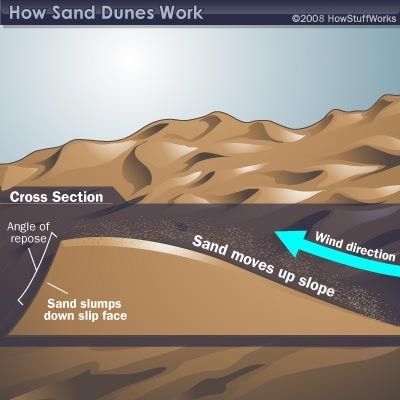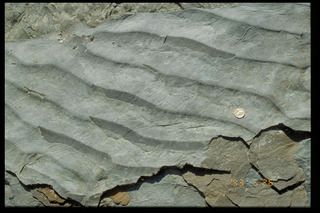Skip to comments.
Astronomy Picture of the Day -- Pluto's Snakeskin Terrain
NASA ^
| September 25, 2015
| (see photo credit)
Posted on 09/25/2015 12:15:25 PM PDT by SunkenCiv
Explanation: Image Credit: Explanation: A mountainous region informally known as Tartarus Dorsa sprawls some 530 kilometers (330 miles) across this Plutonian landscape. Recently downloaded from New Horizons, it combines blue, red, and infrared image data in an extended color view captured near the spacecraft's close approach to Pluto on July 14. Shadows near the terminator, the line between Pluto's dim day and night, emphasize a rough, scaly texture. The stunning image resolves details on the distant world about 1.3 kilometers (0.8 miles) across. Refering to a part of Hades in ancient Greek mythology, Tartarus Dorsa borders Tombaugh Regio to the east.

(Excerpt) Read more at 129.164.179.22 ...
TOPICS: Astronomy; Astronomy Picture of the Day; Science
KEYWORDS: apod; astronomy; pluto; science
Navigation: use the links below to view more comments.
first 1-20, 21-39 next last
[Credit: NASA, Johns Hopkins Univ./APL, Southwest Research Institute]
1
posted on
09/25/2015 12:15:25 PM PDT
by
SunkenCiv
To: brytlea; cripplecreek; decimon; bigheadfred; KoRn; Grammy; steelyourfaith; Mmogamer; dayglored; ...
2
posted on
09/25/2015 12:15:48 PM PDT
by
SunkenCiv
(What do we want? REGIME CHANGE! When do we want it? NOW)
To: SunkenCiv
Looks almost like dunes, but it can’t be because lack of atmosphere/moisture....
Volcanic or seismic related features I guess.
3
posted on
09/25/2015 12:17:06 PM PDT
by
Boogieman
To: SunkenCiv
Who says we take on noted atheist Neil Tyson and promote Pluto to a planet again!?!
To: ChinaGotTheGoodsOnClinton
5
posted on
09/25/2015 12:30:27 PM PDT
by
fishtank
(The denial of original sin is the root of liberalism.)
To: ChinaGotTheGoodsOnClinton
Yes, Show that Sizist a thing or two.
6
posted on
09/25/2015 12:31:19 PM PDT
by
Shady
(We are at war again......this time for our lives...)
To: ChinaGotTheGoodsOnClinton
Never understood how an astronomer could be an atheist.
7
posted on
09/25/2015 12:38:28 PM PDT
by
lacrew
To: ChinaGotTheGoodsOnClinton
No reason why a special exception cannot be made for Pluto.
8
posted on
09/25/2015 12:39:29 PM PDT
by
kidd
To: SunkenCiv
I see what looks like large ice lakes in lower right corner of the Hi Magnification View.
How else account for the glass-like smoothness of those lakes--and no meteorite craters pock the surfaces as in most of the rest of the land mass.
9
posted on
09/25/2015 12:39:56 PM PDT
by
henbane
To: Boogieman
Looks almost like dunes, but it can’t be because lack of atmosphere/moisture.... Volcanic or seismic related features I guess.New Pluto Images Show Possible Dunes, Crepuscular Rays, Unimaginable Complexity
universetoday.com ^ | on September 10, 2015 | Nancy Atkinson
“Seeing dunes on Pluto — if that is what they are — would be completely wild, because Pluto’s atmosphere today is so thin,” said William B. McKinnon, a GGI deputy lead from Washington University, St. Louis. “Either Pluto had a thicker atmosphere in the past, or some process we haven’t figured out is at work. It’s a head-scratcher.”
Plus, a new view of Pluto’s hazy backlit atmosphere shows what are likely crepuscular rays — shadows cast on the haze by topography such as mountain ranges on Pluto, similar to the rays sometimes seen in the sky after the sun sets behind mountains on Earth.
Scientists say these new images reveal that Pluto’s global atmospheric haze has many more layers than scientists realized, and that the haze actually creates a twilight effect that softly illuminates nightside terrain near sunset, making them visible to the cameras aboard New Horizons.
“This bonus twilight view is a wonderful gift that Pluto has handed to us,” said John Spencer, a GGI deputy lead from SwRI. “Now we can study geology in terrain that we never expected to see.”
(Excerpt) Read more at universetoday.com ...
10
posted on
09/25/2015 1:11:14 PM PDT
by
ETL
(ALL (most?) of the Obama-commie connections at my FR Home page: http://www.freerepublic.com/~etl/)
To: Boogieman
Sand Dune FormationA sand dune needs the following three things to form:
A large amount of loose sand in an area with little vegetation — usually on the coast or in a dried-up river, lake or sea bed
A wind or breeze to move the grains of sand
An obstacle that causes the sand to lose momentum and settle. This obstacle could be as small as a rock or as big as a tree.
Where these three variables merge, a sand dune forms. As the wind picks up the sand, the sand travels, but generally only about an inch or two above the ground. Wind moves sand in one of three ways:
Saltation: The sand grains bounce along in the wind. About 95 percent of sand grains move in this manner.
Creep: When sand grains collide with other grains — like clay or gravel — causing them to move. Creep accounts for about 4 percent of sand movement.
Suspension: Sand grains blow high in the air and then settle. About 1 percent of sand moves this way.

http://geography.howstuffworks.com/terms-and-associations/sand-dune1.htm
11
posted on
09/25/2015 1:12:42 PM PDT
by
ETL
(ALL (most?) of the Obama-commie connections at my FR Home page: http://www.freerepublic.com/~etl/)
To: Boogieman
Looks almost like dunes, but it can’t be because lack of atmosphere/moisture.... Volcanic or seismic related features I guess. Like with many planets, moons, and large asteroids, covered with craters, the surface likely has a lot of loose material on it (sand, etc) from it being pulverized by impacts. A top surface layer of loose, unconsolidated material is known as regolith:

But, assuming for the time that it is sand, what caused the apparent "ripples" in it on Pluto?
12
posted on
09/25/2015 1:21:43 PM PDT
by
ETL
(ALL (most?) of the Obama-commie connections at my FR Home page: http://www.freerepublic.com/~etl/)
To: ETL
Shockwaves from impacts maybe?
Even if there is no seismic activity native to the planet, a large impact would send waves out just like an earthquake...
To: henbane
Good catch... if you look at the pockets of lower elevation between the “dune” areas, there appear to be what you called “ice lakes” all over the place!
They are exactly where you would expect water/ice to collect as well, in the crevices and valleys between the higher elevations...
To: ChinaGotTheGoodsOnClinton; fishtank; kidd
I'd be surprised if many of the jackasses who voted Pluto off the list would not just as easily vote "climate change deniers" into prison or prison camps. I tell them, be fruitful and multiply -- but not in those exact words.
 |
"To Pluto And Far Beyond" By David H. Levy, Parade, January 15, 2006 -- We don't have a dictionary definition yet that includes all the contingencies. In the wake of the new discovery, however, the International Astronomical Union has set up a group to develop a workable definition of planet. For our part, in consultation with several experienced planetary astronomers, Parade offers this definition: A planet is a body large enough that, when it formed, it condensed under its own gravity to be shaped like a sphere. It orbits a star directly and is not a moon of another planet. |
15
posted on
09/25/2015 1:46:14 PM PDT
by
SunkenCiv
(What do we want? REGIME CHANGE! When do we want it? NOW)
To: SunkenCiv
Pluto has turned out to be a fascinating little planet! It seems like every release of new images WOWs more than the last and I save all of them. Today’s images are stunning and this one is now my desktop background.
16
posted on
09/25/2015 2:07:01 PM PDT
by
radu
(May God watch over our troops and keep them safe)
To: lacrew
Neil deGrasse Tyson is sort of a Black Carl Sagan, in fact he is hosted the updated Cosmos.
I was looking for some quotes of his that show his twisted logic but every search engine is tilted towards showing his critics wrong.
My impression of his take on things, and I am using some license here is: “We can now roll the film of the Universe back to within a new nanoseconds of the Big Bang, which of course PROVES God doesn’t exist...”
OK I am exaggerating but believe me its pretty close to that.
To: Boogieman
"
Ripple marks come in two forms, symmetric (wave-formed ripples), and asymmetric (current ripples).
Wave-formed ripple result from the to-and-fro motion of waves and have a symmetrical profile.
Current ripple marks form in response to water or wind currents flowing in one direction and have asymmetric profiles.
The asymmetric profiles allow geologists to determine paleocurrent directions, in other words, which direction the wind or water was flowing from when the cross beds were deposited. This is possible due to the fact the longer side of the ripple always faces the upstream direction."
http://thisoldearth.net/Geology_Online-1_Subchapters.cfm?Chapter=5&Row=3
18
posted on
09/25/2015 3:15:58 PM PDT
by
ETL
(ALL (most?) of the Obama-commie connections at my FR Home page: http://www.freerepublic.com/~etl/)

Symmetrical (Wave-formed) ripple marks
_________________________________________

Asymmetrical (Current) ripple marks
(direction of current: right to left <<< )
19
posted on
09/25/2015 3:30:22 PM PDT
by
ETL
(ALL (most?) of the Obama-commie connections at my FR Home page: http://www.freerepublic.com/~etl/)
To: ChinaGotTheGoodsOnClinton
I watched some of the new Cosmos with him. But (as with most entertainment these days) I watched with apprehension, because I knew that sooner or later whatever interesting subject he was talking about would turn into a global warming propaganda film.
20
posted on
09/25/2015 3:37:10 PM PDT
by
lacrew
Navigation: use the links below to view more comments.
first 1-20, 21-39 next last
Disclaimer:
Opinions posted on Free Republic are those of the individual
posters and do not necessarily represent the opinion of Free Republic or its
management. All materials posted herein are protected by copyright law and the
exemption for fair use of copyrighted works.
FreeRepublic.com is powered by software copyright 2000-2008 John Robinson




